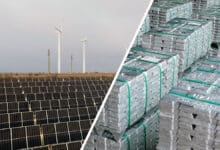Renewable energy leader Suzlon Group has clinched a significant contract from Integrum Energy Infrastructure for the development of a 31.5-MW wind energy venture. While the exact financial details remain undisclosed, the deal reinforces Suzlon’s pivotal role in India’s clean energy transition.
In an official announcement, Suzlon Group revealed its latest triumph – an order from Integrum Energy Infrastructure to spearhead the creation of a 31.5-MW wind energy project. The comprehensive scope of the project includes supply, installation, and commissioning, underscoring Suzlon’s commitment to delivering an end-to-end solution. Additionally, Suzlon will extend its expertise in post-commissioning operation and maintenance services.
The project involves the installation of 15 units of S120-140m wind turbine generators (WTGs) featuring a Hybrid Lattice Tubular (HLT) tower. Each turbine will possess a formidable rated capacity of 2.1 MW. These WTGs will be strategically placed across the regions of Maharashtra and Karnataka, two states renowned for their wind energy potential. With a targeted completion date set for May 2024, the project is poised to make a substantial contribution to India’s renewable energy landscape.
JP Chalasani, the CEO of Suzlon Group, expressed his enthusiasm regarding the partnership with Integrum Energy Infrastructure. He stated, “We are delighted to announce our second order with Integrum Energy Infrastructure. The power generated from this project will be used for captive consumption, creating deeper penetration of renewable energy in India.”
Anand Lahoti, the Founder and CEO of Integrum Energy Infrastructure, echoed the sentiment, praising Suzlon’s ‘made-in-India’ products that align seamlessly with their commitment to promoting a self-reliant India through the “Aatmanirbhar Bharat” initiative.
A remarkable aspect of this initiative lies in its potential impact on both energy sufficiency and environmental preservation. The electricity harnessed from this sizable project is earmarked for captive consumption, illuminating the potential of clean energy to meet local demands. The energy generated by the wind turbines can power approximately 20,000 households, a feat that will not only bolster the region’s energy security but also significantly reduce the carbon footprint. It is estimated that the project’s operations could curb approximately 0.81 lakh tonnes of CO2 emissions annually.













